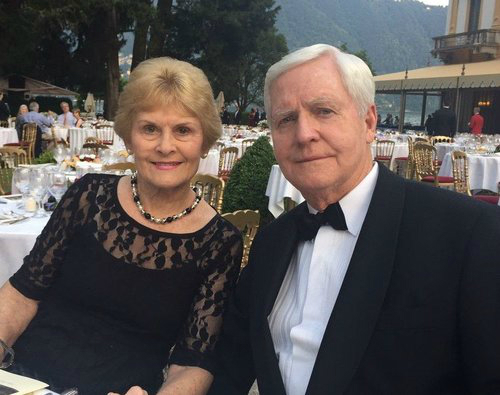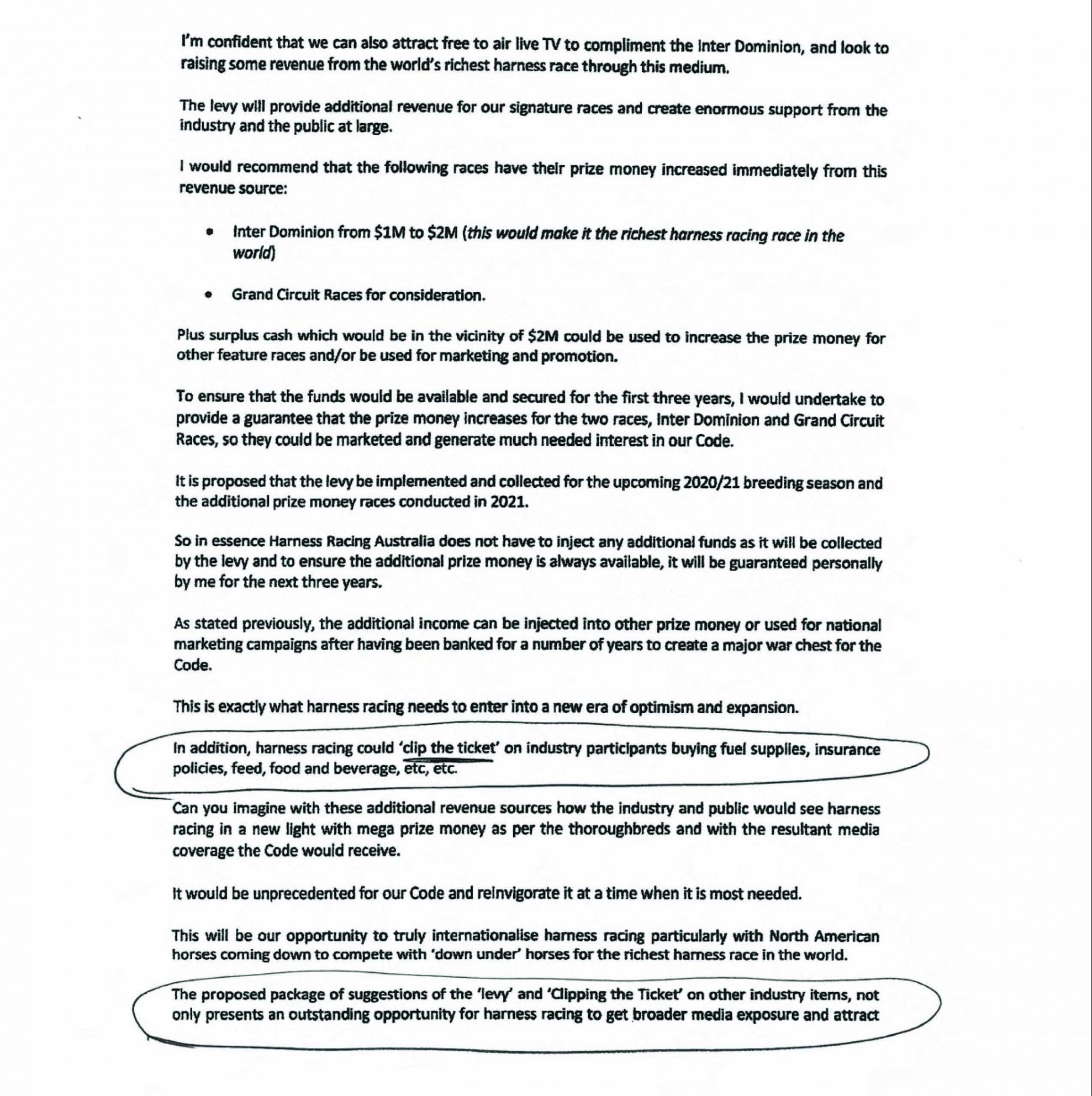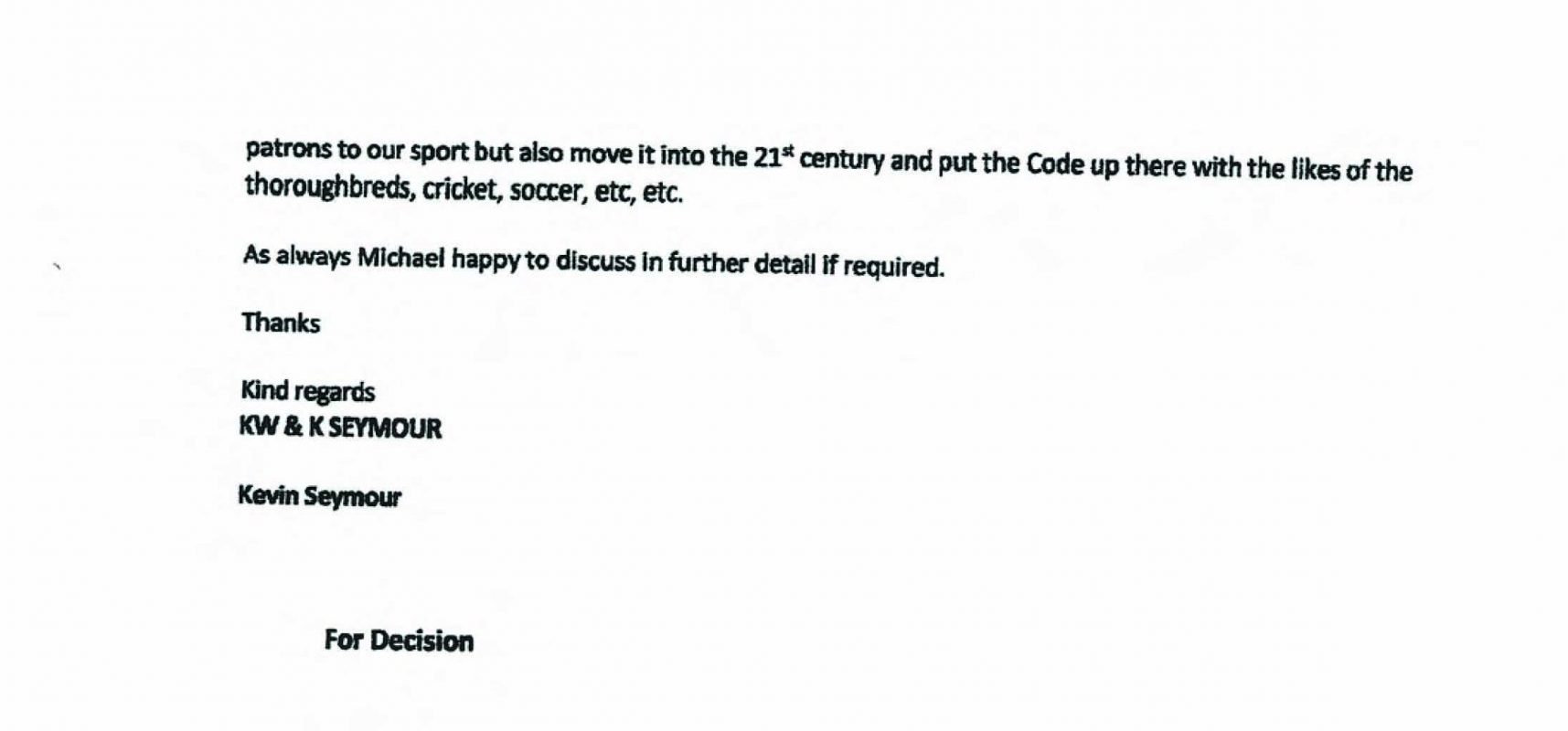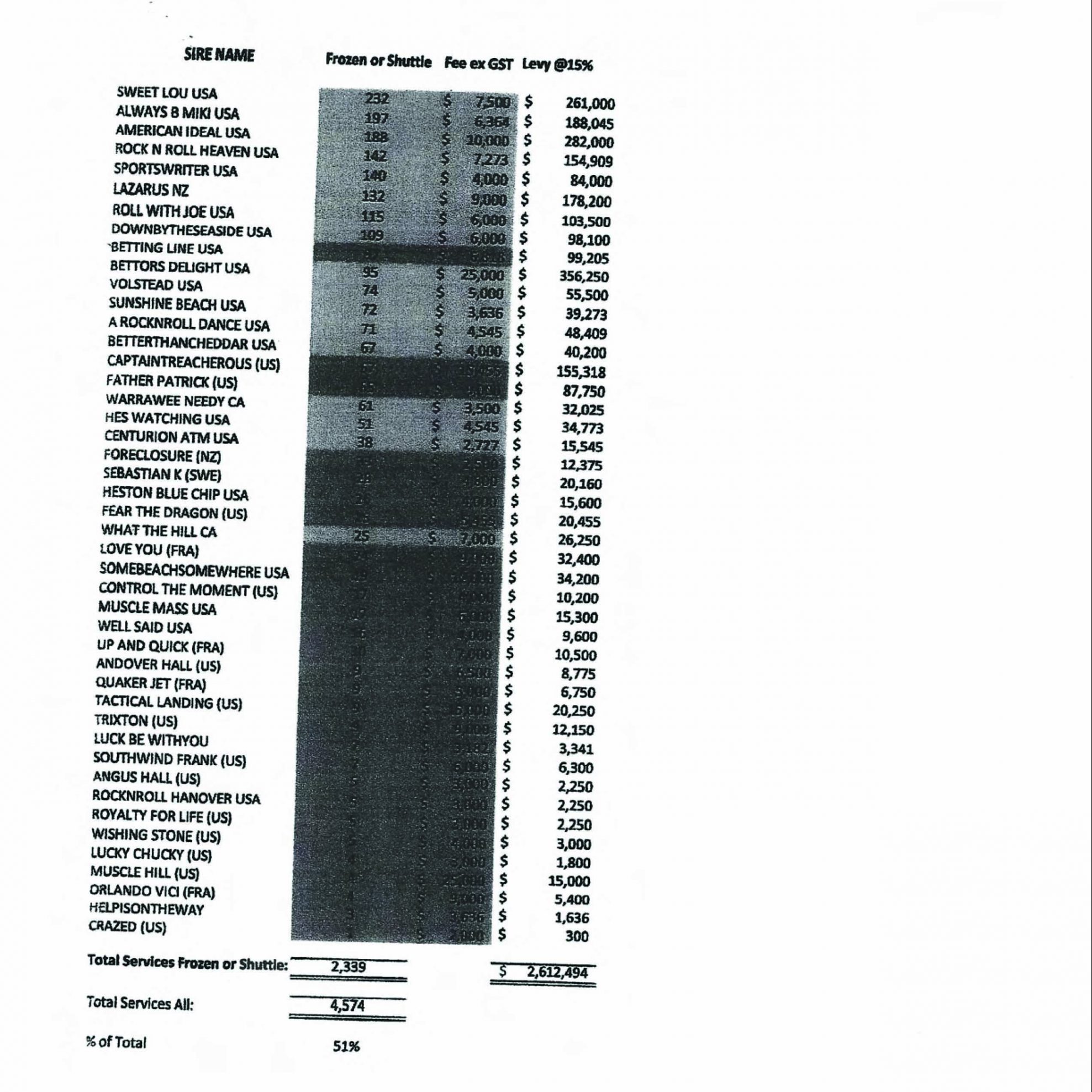How a billionaire and Harness Racing Australia jointly conceived a Stallion Tax and now risk the future viability of the entire Australian Harness Racing Industry. 
The idea of a slot-based major harness racing event attracted the majority support of the Australian industry until it became well known that one segment, the breeders, without professional consultation were being forced to contribute massive funds for the concept to proceed.
How did this eventuate and why did an ignorant and sub-standard HRA CEO (Andrew Kelly) and major States Executive HRA Board Members Dale Monteith (HRV), Graeme Campbell (HRA), and Ken Brown (HRNSW) all swallow the billionaire’s Stallion Tax imperative like a flock of hungry seagulls gutsing hot chips
All of these administrators have participated to some degree in the continuing demise of the Australian Harness Racing Industry over past decades as the professionalism of the greyhound and thoroughbred industries have left harness racing in their wake. These people are accountable for this unacceptable situation, and they continue to make costly mistakes, persistently ignoring the concerns those much smarter than them who invest in the future of the industry.
In May 2020 at a meeting of the HRA executive, a proposal from the billionaire Queensland property developer Kevin Seymour (a long-term associate of Andrew Kelly who was CEO of Harness Racing Queensland from 2006 to 2008) was tabled for consideration.

Mr Seymour has been heavily involved in Queensland Harness Racing for well over three decades but unfortunately his involvement has not resulted in growing prosperity for his State as is evidenced by the reality of a decline in foal numbers from 727 in 1997 – 1998 to 291 in 2019 – 2020, a decline in horses named from 449 to 189, in drivers licensed from 571 to 159 and trainers licensed from 713 to 254 over similar periods and annual prize money gains lagging behind the competitor racing codes over the past five years.
Total Prize Money and Breeding Scheme Payments by Code
FY16 ($M) FY21 ($M) Gains over 5 years
Thoroughbred 107.0 146.2 +$39.2 million
Greyhound 14.1 25.0 +$10.9 million
Harness 16.8 22.0 +$ 5.2 million
⃰ Source: – Racing Queensland
Hardly a positive result for Queensland’s harness racing participants.
Mr Seymour’s latest attempt to grow the harness racing industry is badly flawed being little more than unsubstantiated opinion and puffery which has been endorsed by the inept acceptance and associated untested propaganda campaign approved by HRA management and its State executive board members.
Mr Seymour’s proposal for the slot race and his funding recommendation “to charge a levy of 15% on all services sold for North American shuttle stallions and/or imported semen coming in to Australia” was based on his opinions alone and is totally bereft of any due diligence or research modelling in regards of risk mitigation to the future viability of the harness racing industry as a consequence of less foals, less racing stock and reduced revenues from lower wagering turnover.
The Breeders Voice Petition currently has some 643 participants SAYING NO to the Stallion Tax, 14 critically important stud farms disagreeing with the Tax, 90% of breeders are also against and an independent social media poll of 130 breeders reveals that 58% (75) will stop breeding, 27% (35) will breed fewer, and 12% (16) will continue breeding and 3% (4) might continue breeding.
To view The Breeders Voice Petition, click here.
The final number of foals to have been micro chipped in the major breeding States last season is approximately 935 in NSW and 1,050 in Victoria which is down on previous numbers.
Around 40% of these foals will not race meaning only around 1,191 will make the races.
Obviously any further declines in foal numbers will be catastrophic for the industry’s future.
Faced with these red flag danger facts (not opinions) when participants genuinely concerned about the future of their sport asked questions of the hierarchy including the Andrew Kelly, Dale Monteith, and Ken Brown no answers were forthcoming and all they got was to experience the ignoring, ignorant “we know best” culture of HRA.
Why were there no answers from the supposed leadership?
Simply because, as always, they have demonstrated no capability to prove that they have conducted any appropriate due diligence or risk mitigation modelling to support their Stallion TAX decision and continue on with their ongoing inability to grow the prosperity of the Australian Harness Racing Industry for the benefit of its participants.
Their willingness to risk the future of the entire harness racing industry by adopting a Stallion Tax they cannot guarantee will not result in fewer foals, less racing stock and resultant diminished wagering income is testimony to their ongoing failure of industry leadership.
Whether you are a breeder, owner, trainer, reins person or goods and services provider if you wish to be assured that your loved industry is going to survive then you need to do your bit to ensure it does.
Now is the time to drain the HRA swamp and to replace those who wish to risk your future in the industry with those who put the future of all participants first not just a minority of the wealthy who can afford to replace the Stallion Tax with their own funds if they desire to participate in the $2.1 million Eureka slot races.
The simplest way to do this is to Google ‘The Breeders Voice’ sign the petition and make your views known across the industry.
See Kevin Seymour’s Stallion Tax proposal in full below or click here.

 USA
USA Canada
Canada Australia
Australia New Zealand
New Zealand Europe
Europe UK / IRE
UK / IRE




 by
by 

